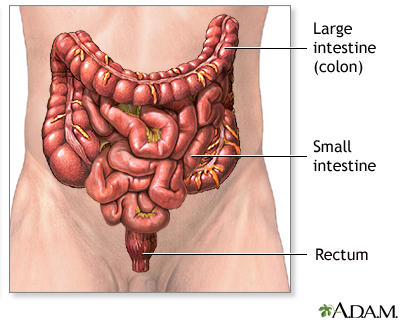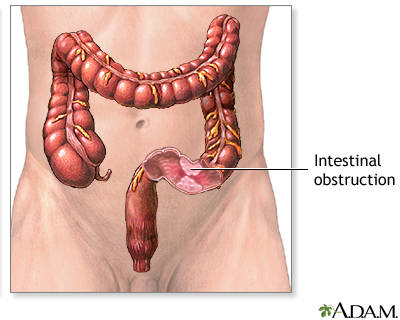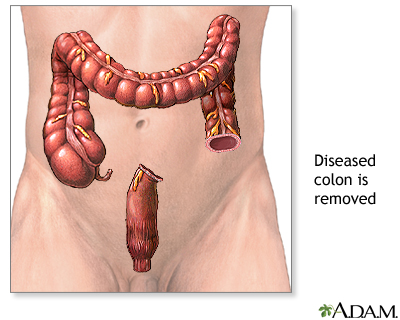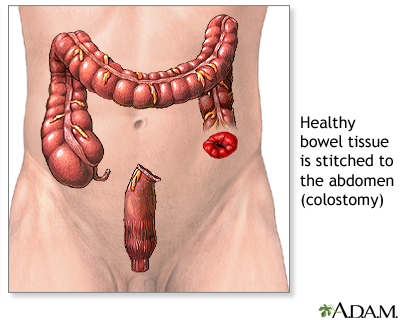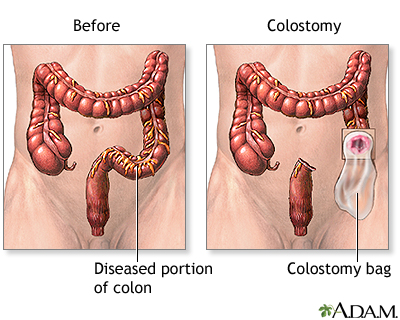Colostomy
| Normal anatomy |
| The colon, or large intestine, connects the small intestines to the rectum.
|
| Indication |
|
A colostomy is done when the large intestine, rectum, or anus is unable to function normally or needs rest from normal functions. Intestinal obstruction with associated inflammation, as in diverticulitis, is a common indication for colostomy. |
| Procedure, part1 |
A colostomy creates an opening on the abdomen (stoma) for the elimination of stool (feces) from the large intestine (colon). Colostomies are usually performed after the diseased colon has been removed.
Colostomies may be temporary or permanent. While the patient is deep asleep and pain-free (general anesthesia), an incision is made in the abdomen. The diseased portion of the colon is removed.
|
| Procedure, part 2 |
|
The proximal (higher) end of the healthy colon is then brought out to the skin of the abdominal wall, where it is sutured in place. An adhesive drainage bag (stoma appliance) is placed around the opening. The abdominal incision is then closed. |
| Aftercare |
In more than 90% of the cases, the surgery is successful.
The patient may have crampy pain after surgery as the anus tightens and relaxes. Medications to relieve pain may be used. Avoid any straining during bowel movement or urination. Soaking in a warm bath can bring additional comfort. Depending on the disease process being treated, colostomies can be removed and the colon reconnected in a second operation within weeks to months after the first operation.
|

|
Review Date:
12/22/2011
Reviewed By:
Harvey Simon, MD, Editor-in-Chief, Associate Professor of Medicine, Harvard Medical School; Physician, Massachusetts General Hospital. |
The information provided herein should not be used during any medical emergency or for the diagnosis or treatment of any medical condition. A licensed medical professional should be consulted for diagnosis and treatment of any and all medical conditions. Links to other sites are provided for information only -- they do not constitute endorsements of those other sites. © 1997-
A.D.A.M., Inc. Any duplication or distribution of the information contained herein is strictly prohibited.



